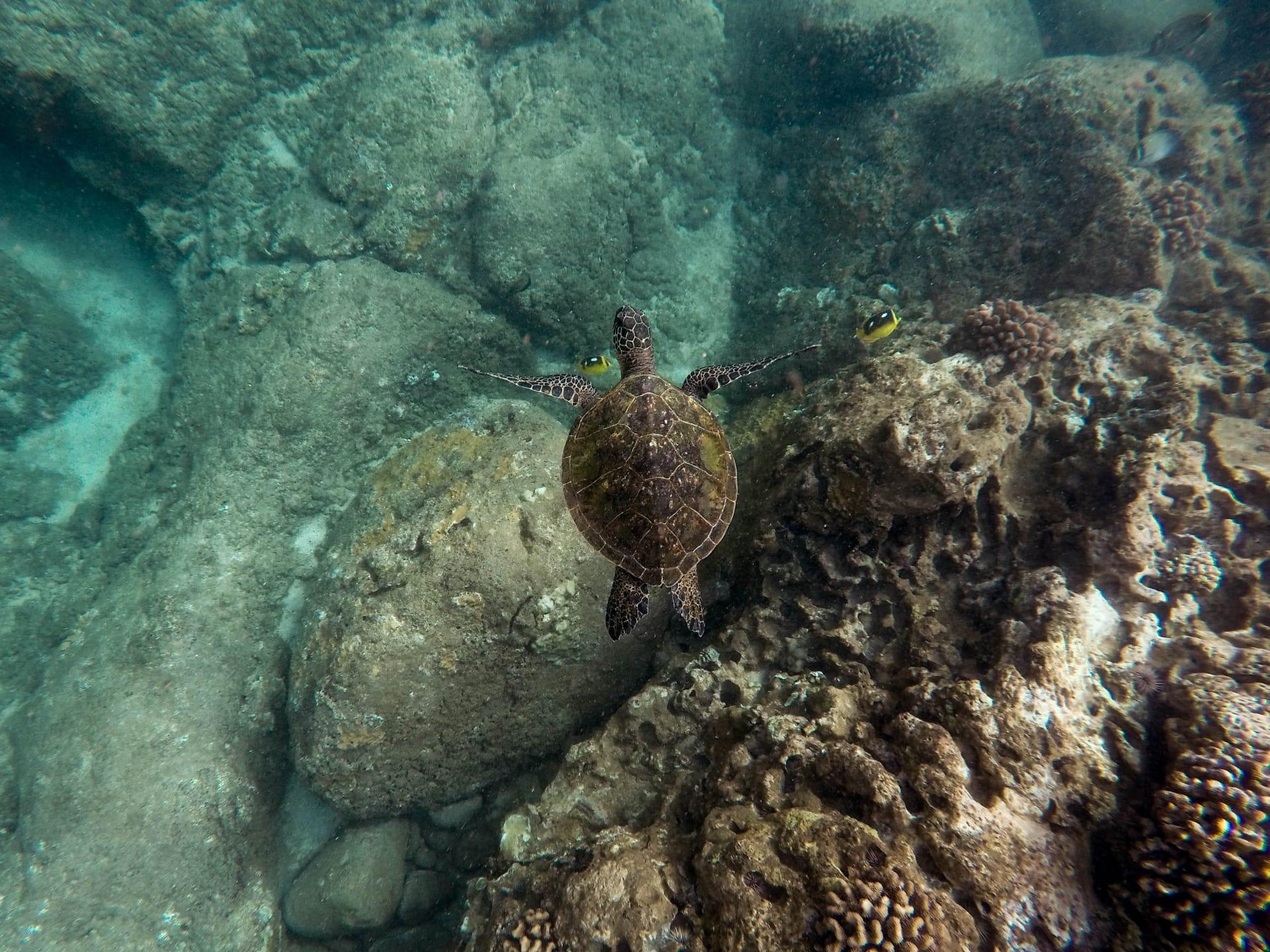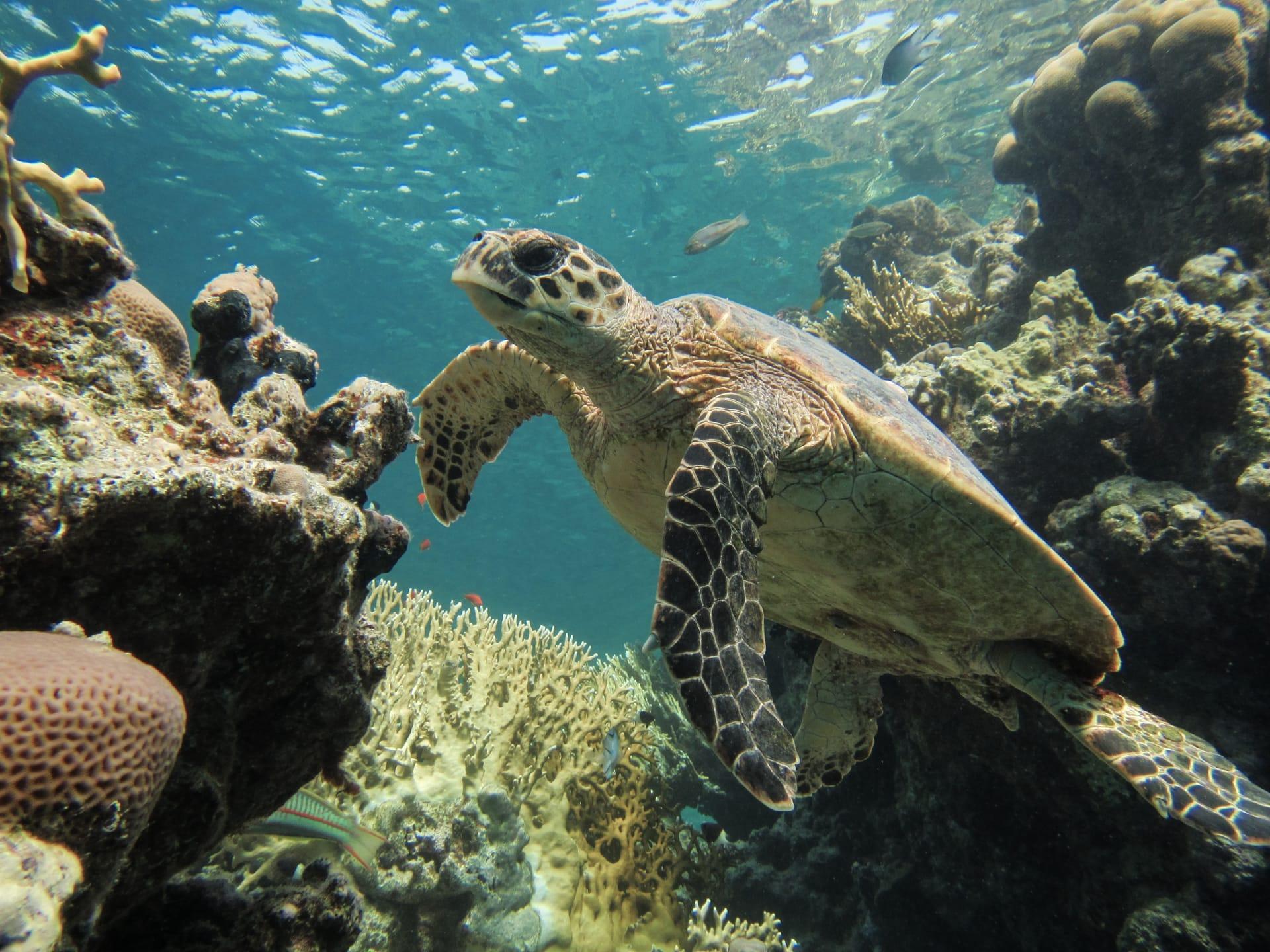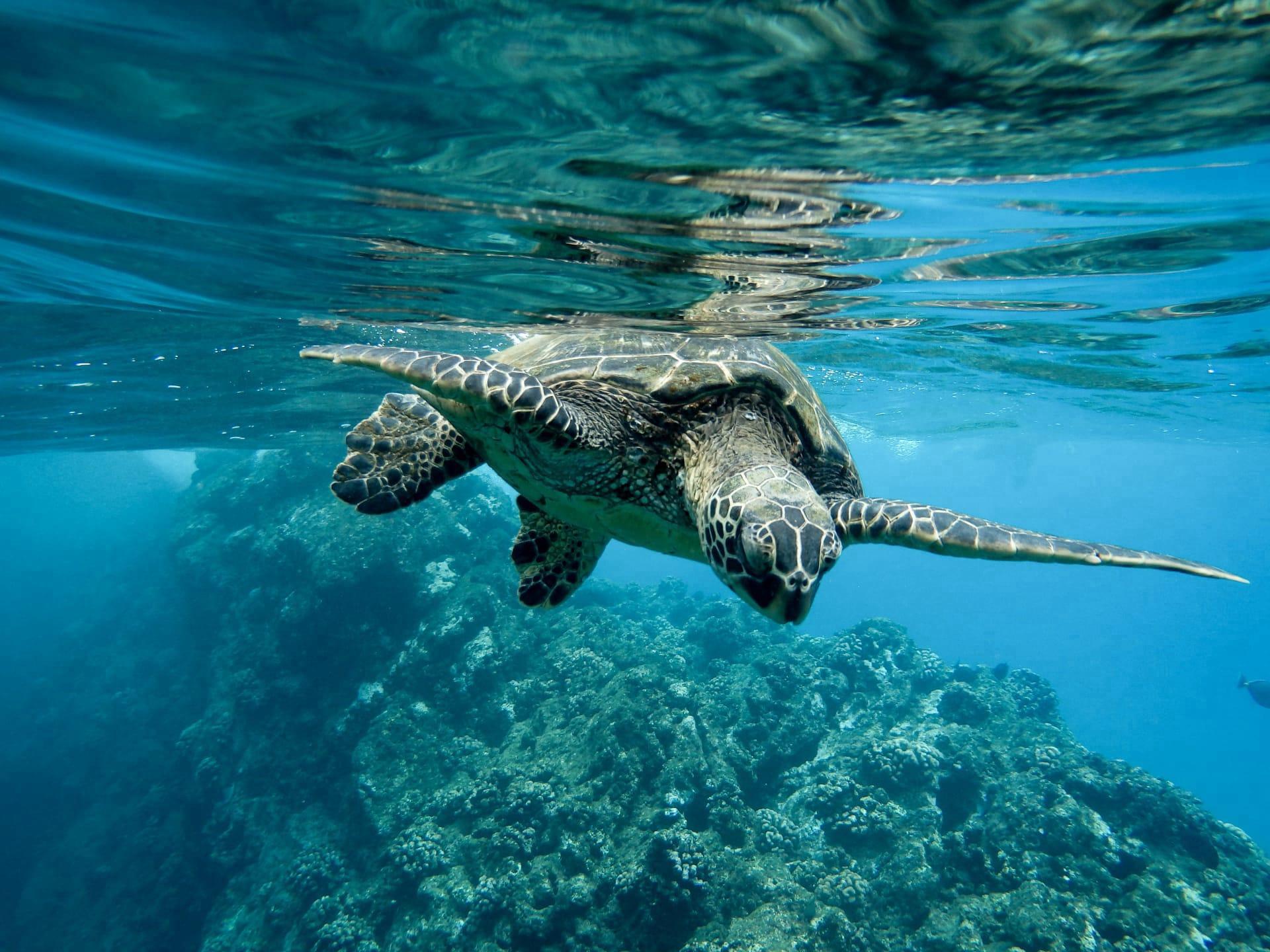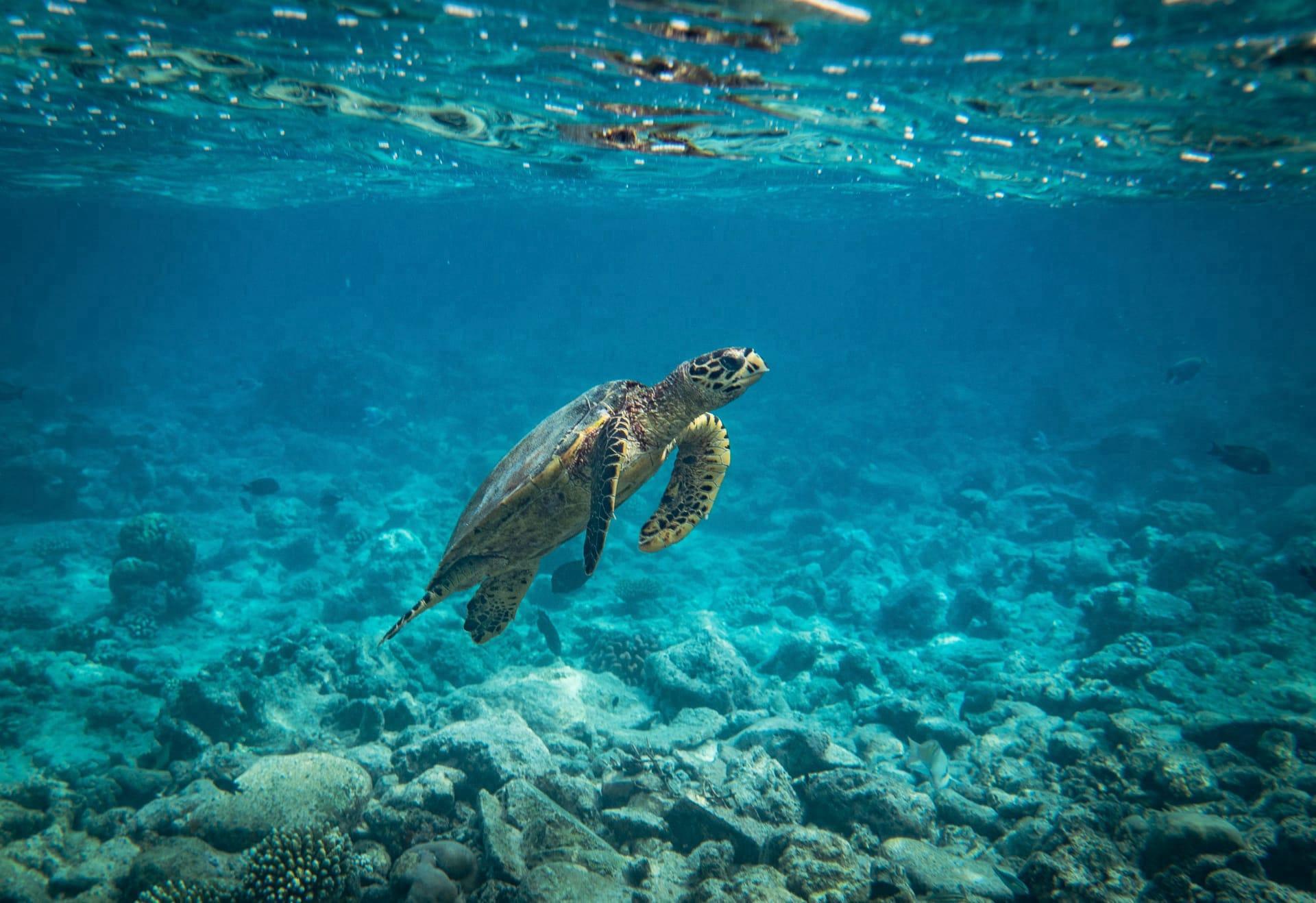Sea Turtle
- Home /
- Mini Encyclopedia /
- Animal /
- Sea Turtle
1
Sea turtles, ancient mariners of the ocean, belong to the Cheloniidae and Dermochelyidae families. There are seven main species: the Green, Loggerhead, Kemp's Ridley, Olive Ridley, Hawksbill, Flatback, and the largest, the Leatherback. Each species, except the Flatback, roams the oceans globally. The Green turtle, known for its distinctive green fat, is found in tropical and subtropical waters. Loggerheads, with their large heads and powerful jaws, frequent the Mediterranean Sea, Atlantic, and Pacific Oceans. Kemp's Ridley, the smallest, is primarily located in the Gulf of Mexico. The Olive Ridley is notable for its massive nesting, known as arribadas, mainly in the Indian and Pacific Oceans. Hawksbills, recognized by their sharp, curving beak and stunning shell, inhabit tropical waters. The unique Flatback, living exclusively in waters around Australia, is named for its flat shell. The Leatherback, distinct with its leathery shell, navigates both the tropical and subarctic waters.
Sea turtles have a global distribution, covering almost every ocean basin. Their habitat extends from the frigid waters of the Arctic to the warm tropical beaches where they nest. Green turtles are widely found along the coasts of over 140 countries, with major nesting sites in Costa Rica and Australia. Loggerheads have a broad range, with nesting sites from Japan's shores to the beaches of the southeastern United States. Kemp's Ridley turtles, mainly found in the Gulf of Mexico, also nest along the coast of Texas. Olive Ridleys favor warmer waters, with significant nesting sites in Mexico and India. The Hawksbill's range includes the Atlantic, Pacific, and Indian Oceans, often near coral reefs. The Flatback's habitat is unique, confined to northern Australia's coastal waters. Leatherbacks, the most widely distributed, travel vast distances, nesting in places like Indonesia and feeding as far off as the coasts of Alaska and Norway.

2
Question: Do sea turtles always return to the same beach to lay their eggs?
Answer: It's a common belief that sea turtles always return to their birthplace to lay eggs, but recent studies suggest a more complex behavior. While many do exhibit natal homing, returning to their birth beaches, some are known to nest in multiple locations. This behavior might be influenced by various factors, including environmental conditions and food availability. The fidelity to natal beaches is strongest in species like the Kemp's Ridley and Loggerhead. However, satellite tracking has revealed that some individuals choose different beaches within the same region, indicating flexibility in nesting behavior. This adaptive trait could be vital for their survival in changing oceanic conditions.

3
Sea turtles employ several strategies to survive in the ocean. One key tactic is their varied diet. For instance, while Green turtles are mainly herbivores, feeding on seagrass and algae, Loggerheads eat a variety of prey, including jellyfish, crabs, and mollusks. Leatherbacks specialize in jellyfish, which requires them to travel long distances to find sufficient food. Their ability to dive deep also aids in survival; Leatherbacks can dive over 1,000 meters, staying submerged for up to 85 minutes. This ability helps them avoid predators and find food in deeper ocean layers.
Another critical survival strategy is their migratory behavior. Sea turtles travel long distances between feeding grounds and nesting sites, a journey fraught with challenges. They navigate using the earth's magnetic field and possibly visual cues, demonstrating remarkable navigational skills. This migration is essential for their life cycle, ensuring genetic diversity and survival of the species. Additionally, their hard shells provide protection from predators, though this is less effective against human threats like fishing nets and plastic pollution.

4
In the ecosystem, sea turtles play a vital role in maintaining the health and balance of marine environments. Green turtles, by grazing on seagrass, enhance the growth and health of seagrass beds, crucial for other marine life. Their feeding activity helps maintain the seagrass beds' productivity and nutrient cycling.
Sea turtles also contribute to nutrient distribution. Nesting females bring nutrients from the ocean to beaches, benefiting coastal ecosystems. Additionally, hatched eggs and hatchlings that don't survive provide vital nutrients to beach ecosystems. Furthermore, turtles indirectly support the health of coral reefs. Hawksbills, by feeding on sponges, help maintain the balance in coral reef ecosystems, allowing corals to flourish. Overall, sea turtles are essential for the biodiversity and functionality of marine ecosystems, influencing everything from seagrass beds to coral reefs.

5
Film: "Turtle: The Incredible Journey" (2009), a UK and Austrian production, is a remarkable documentary that follows the life of a Loggerhead turtle. This film, narrated by Miranda Richardson, beautifully captures the turtle's epic journey from the Florida beach where she was born, across the Atlantic Ocean, to the African coast, and back again. It highlights the challenges and dangers these creatures face throughout their lives.
Book: "Voyage of the Turtle: In Pursuit of the Earth's Last Dinosaur" (2006, United States). Written by Carl Safina, this book offers an insightful look into the lives of Leatherback sea turtles. Safina blends science, history, and personal experiences to narrate the journey of these ancient mariners, emphasizing their struggle for survival in the modern world.
Book: "The Biology of Sea Turtles" (1997, United States). Authored by Peter L. Lutz and John A. Musick, this book is a comprehensive scientific exploration of sea turtle biology. It covers various aspects, including physiology, behavior, and conservation efforts, providing a detailed understanding of these fascinating creatures.